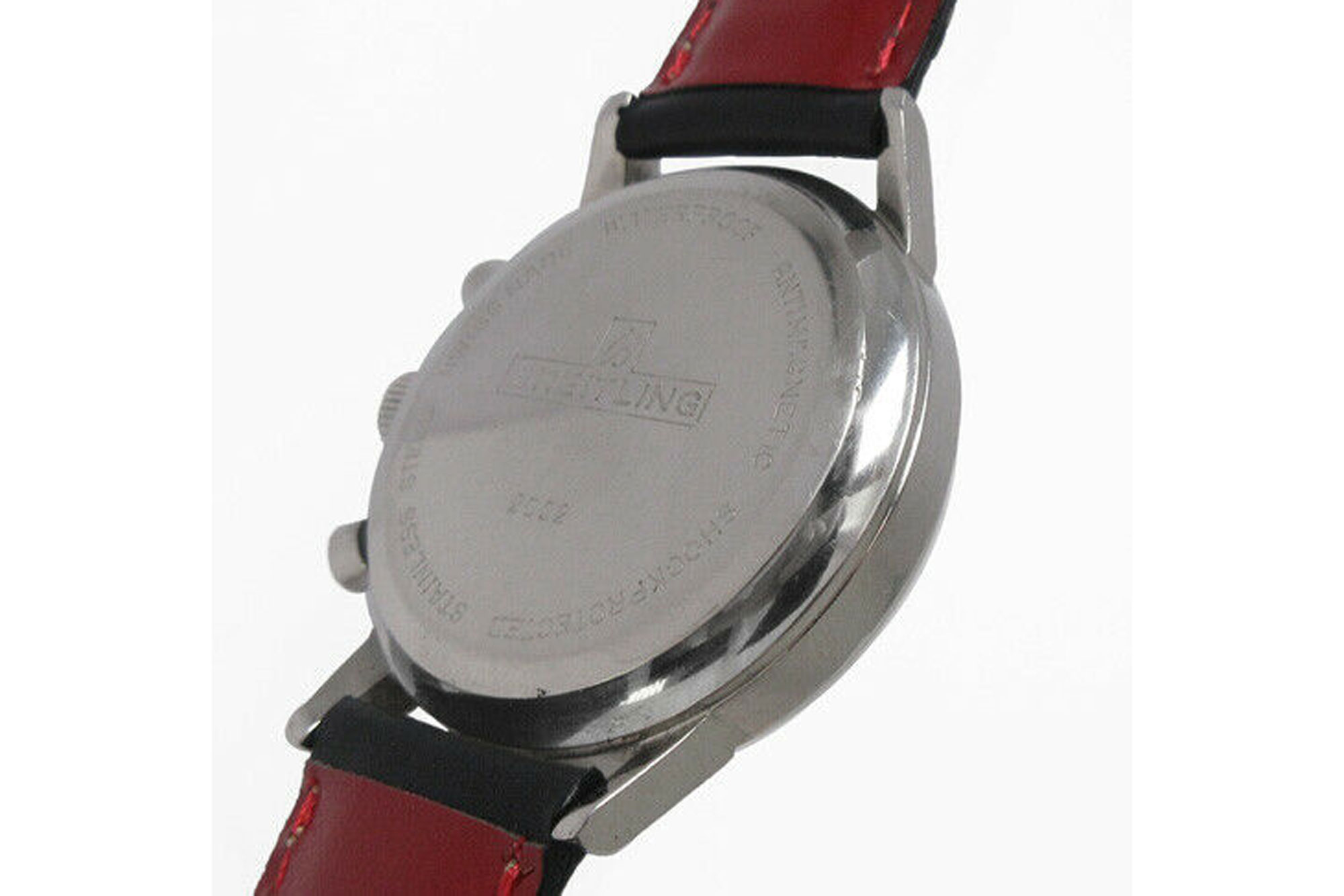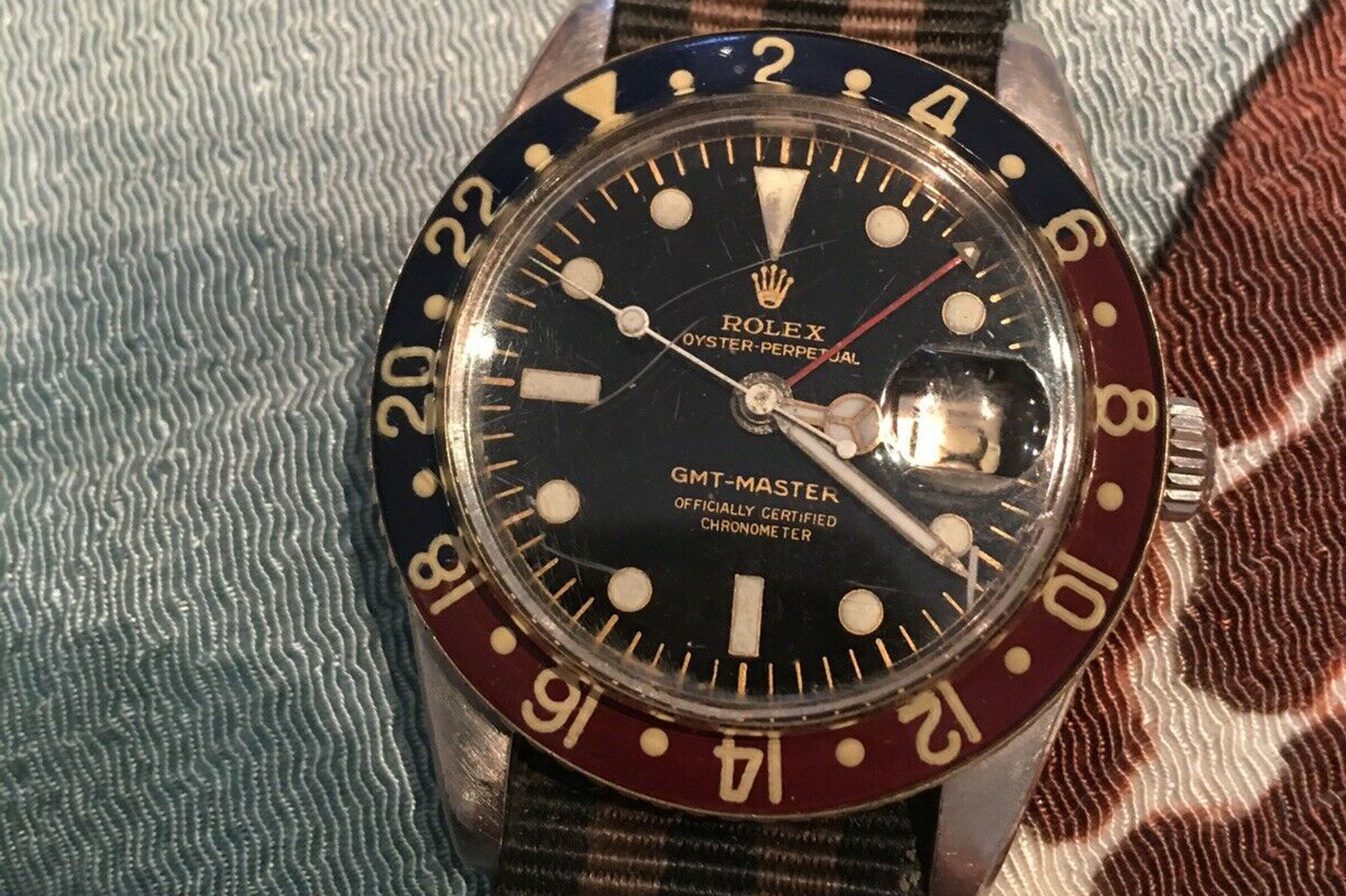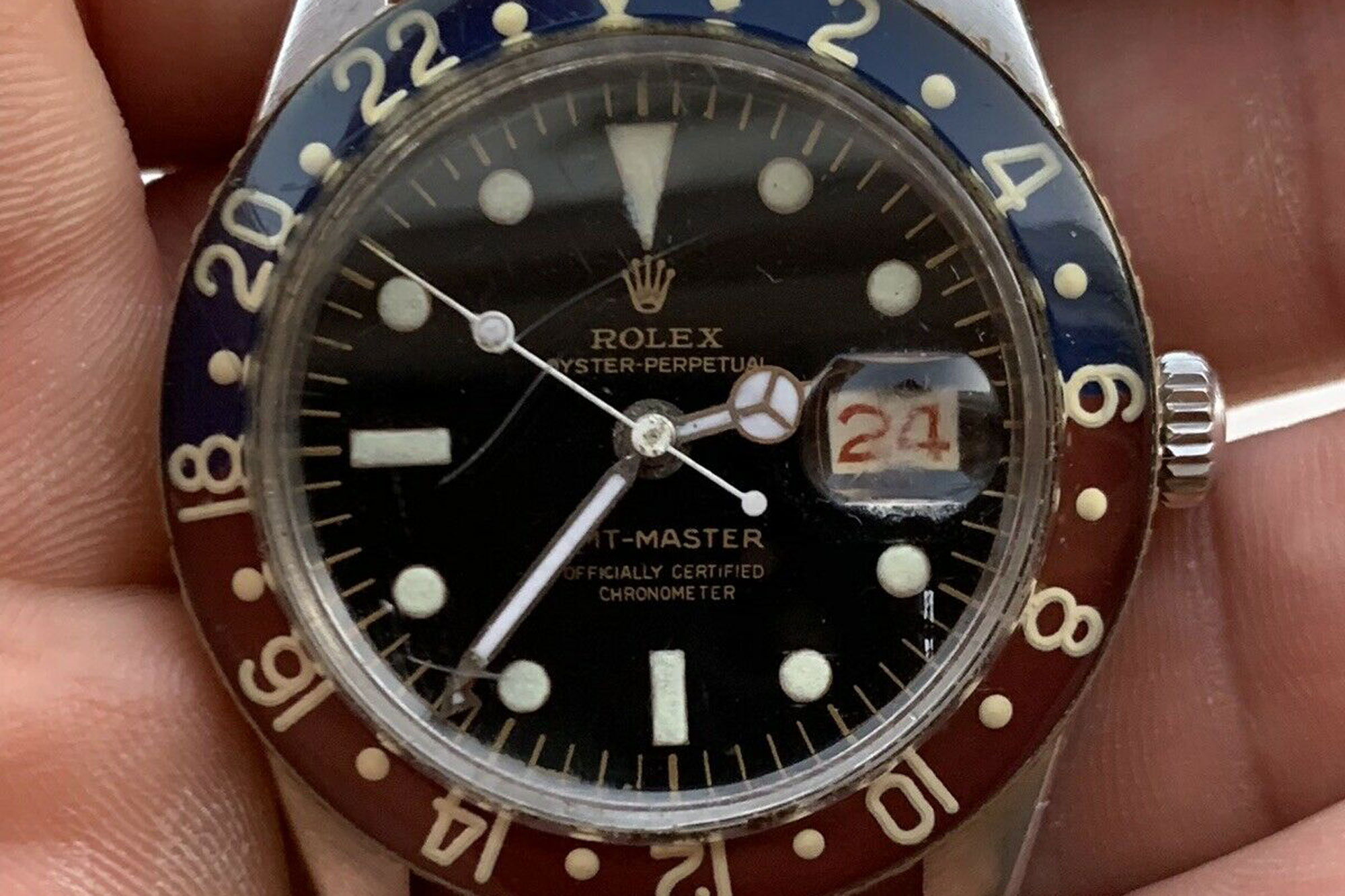ADVERTISEMENT

ADVERTISEMENT
It's Friday, which means we're back with another edition of the column, complete with a stand-out cast of exciting characters. In the mood for a heavy hitting, statement piece? We've got you covered, with the inclusion of the original "SARU" GMT-Master, which we're pretty sure is listed in the dictionary under the definition of "wow." On a similarly impressive though decidedly different note, there's the most incredible perpetual calendar pocket watch from Patek Philippe, with a retailer signature you ought to appreciate. If you're after something more accessible, though equally compelling, we've got a pulsations dial-fitted Top Time from Breitling, along with a watchmaking school project watch, produced back in the 1970s. Rather than spill all the beans here, let's dig into the roundup and see what's what.
Breitling Top Time Ref. 2002
If legibility, durability, and lasting style are important to you, then I'd recommend making a beeline straight for chronographs of the 1960s. Sure, other decades of chronograph production gave life to genius, as well, but it was arguably during this specific period that the sports chronograph reached its peak. While we could go on all day about a certain model that's already been discussed to seemingly no end, I thought we'd focus on another one of my favorite chronographs of the era, that's perhaps still a bit under-appreciated.
Nope, this isn't a Heuer, nor is it a Rolex – we're talking about a Breitling to kick things off today. You're looking at a Ref. 2002 Top Time, but no ordinary one as you'll quickly learn, unless your savant-like ways have already tipped you off to this one's special something. Though the dial is rather demure with a standard, sunburst silver finish, it has an ace up its sleeve, or rather a pulsations scale around its minute track, which adds a great deal of intrigue to an otherwise subtle watch. Considering other instances in which I've found similarly configured dials, I'd wager that this piece was originally ordered by a medical professional back in the day.
This medical professional in question might've had great taste in watches, but it seems as if they weren’t much for actually wearing them, as evidenced by the stunning condition. Though the photos aren’t exactly top notch, the dial appears to be free of any large scuffs or flaws, aside from a single marking in the seconds subdial. Its case also looks to be very sharp, as well, making this exactly the sort of piece I'd go after.
An eBay seller based out of Japan has this interestingly configured Breitling available for purchase with an asking price of $6,200. You also have the option to make an offer, as well. Find out more here.
ADVERTISEMENT
ADVERTISEMENT
1985 Rolex GMT-Master Ref. 16758 SARU
I'm not going to dance around the elephant in the room here. We're moments away from talking about a fully flooded, iced-out beyond belief Rolex. With that said, it's not just any iced-out Rolex, but the very first reference to feature precious stones set into the case of a sports model. For the record, this is not the kind of watch I'd like to feel touching my fingertips, as I reach over to my nightstand upon waking up in the morning, but then again it strangely sort of is. Don't worry, I’ll explain.
As previously mentioned, this original Ref. 16758 SARU (SARU stands for Saphirs, Rubis) holds a special place in the Rolex back-catalogue, given how it introduced the concept of adorning the brand's sports models in precious stones, which in this case are sapphires and rubies. This of course has become quite the phenomenon in recent years, with collectors endlessly chasing after rainbow Daytonas, and the like. In my opinion, this watch is the perfect example of going overboard without going too overboard, in that the SARU bezel maintains the Pepsi aesthetic brilliantly.
Here’s the part I can't quite explain. I’ve been lucky enough to have this reference on my wrist on more than one occasion, and as much as it goes against most everything that I stand for with regards to watches, and understated style, it's great on the wrist. Like, really, really great. Ultimately, I'd attribute this obsession out of left field to the overall quality of the piece, and just how expertly every last stone is set, but I think deep down it's the color and fun nature of the piece that attracts me.
If you’ve got the personality and finances to pull off such a larger than life watch, head on over to the Christie’s site, where this piece will be offered online with an estimate of $280,000 to $320,000.
Patek Philippe Ref. 725/2 With Tiffany Signature
Now let's say you're in the market to make a statement, but one of a different sort. If that last GMT was a red, drop-top Corniche, that's parked right outside, this one is more along the lines of a silver DB5, tucked away in an underground garage that you didn't know existed. We're taking a moment to go off the wrist and into the pocket, which I have a feeling you'll get a kick out of. Now that you've got the picture, let's take a moment to ogle the lines of that aforementioned DB5.
Ok, so we’re not actually talking about a DB5 here, but an early Patek Philippe pocket watch that's essentially the epitome of class and taste. Corresponding with the Ref. 725/2, this piece is equipped with a full perpetual calendar capable of accounting for leap years, and a moonphase indicator, which of course is finished masterfully. Being one for both symmetry, and watches of this era, I've always appreciated just how well proportioned the Ref. 725 family is, with its perfectly sized, leaf-shaped hands, and applied numerals which catch the light. This really is one of those pieces you have to handle in the metal.
If you've made it this far in, chances are you noticed a little extra text in the heading, along with a little smudge below the Patek Philippe signature at six o’clock. That’s no ordinary smudge, as it reads “TIFFANY & CO,” informing us that this piece was originally sold by the legendary American luxury retailer. As many will know, this is a detail sought after by Patek Philippe collectors across the globe, and to find it on an important pocket watch is all the more special. I'm excited to see where this watch ends up, as I'm guessing that whoever buys it will undoubtedly have some seriously impeccable taste.
Christie's is offering this rare and complicated Patek Philippe with an estimate of $75,000 to $100,000. Find the full scoop here.
Ecole D'Horlogerie Watch
I’ve always been fascinated with the idea of watches you can't buy. Be it a military-issued tool-watch, available only to the bravest and brawniest, or an unobtanium-esque 1/1 piece, reserved for collectors with pockets as deep as the day is long – I can dig it. This not only proves the efficacy of limited edition watches as a whole, but shows how we sometimes just want what we can't have. When faced with such a quandary, some may wallow in their first world sorrows, and do that Charlie Brown sad walk thing, while other particularly talented individuals choose to take an admirable path, and enroll in watchmaking school to realize their horological dreams.
It is for this very reason why we have watches like this piece. You see, a great many watchmaking programs throughout the past half century have required their students to produce a timepiece upon completion of their studies. As a result, each watch is a direct reflection of the time in which it was crafted, along with the student watchmaker credited with its crafting, creating an altogether unique sort of wristwatch. In the case of the watch in question, there's a strong '70s vibe emanating from the funky shape of the case and sunburst dial, which honestly raises a lot of questions about the environment of watchmaking schools during this time.
As many will know, the 1970s marked the beginning of the so-called "Quartz Crisis," in which quartz technology took the world of horology by storm, sending many brands out of business, and forcing others to adapt to what was seen as the future of the craft. With all this in mind, I would've loved to have been a fly on the wall in a mechanical watchmaking course, right as the industry was heading in a vastly different, and slightly alarming direction. There’s no knowing for sure what that environment was like, but what's for certain is that this piece has held up wonderfully over the years. I would love to know what the individual responsible for this creation is up to these days.
You’ll find this watch listed on eBay, where a Portland-based seller has it listed for $3,850. The option to make an offer is there, as well.
ADVERTISEMENT
Buyer Beware
To be perfectly frank, there’s a lot of deceiving funny business going on this week, and I mean a lot. Given that I'm not sure I’ve ever seen so many bad watches on eBay alone in a single week, I knew some spread of the good word had to go down, so that's what we’re about to do.
Rolex GMT-Master Ref. 6542
As both you and I know, this is the reference the started it all, and kicked off the great GMT Master line of watches we know and love today. As we also both know, something isn’t right here, and by something I mean several things. Before we go any further, I’d like to point out that while the asking price of $17,900 is surely too little for a clean Ref. 6542, it's still far too much for a dicey example with parts of questionable origin.
The Ref. 6542 made a splash with its red and blue bakelite bezel, which is of course now referred to as the "Pepsi" configuration, though perhaps more reminiscent of Pan Am at the time of its release. Being a brittle material, few bakelite bezels from the Ref. 6542 have survived the years totally unscathed, or free from the effects of radioactive substances. That makes this perfect example a little questionable, and that’s because yes, the bezel is fake. This can be determined by analyzing the size and depth of the numerals, along with the luminous compound that they’ve been finished in.
On the dial, we've got all the usual text you'd expect to see on a watch like such, but alas, it’s not legit either. Should you need a point of reference to confirm this notion, take a look at the text which reads "GMT-MASTER," and the way in which the "GMT" text is seemingly on a slightly higher plane, and further to the left of the hyphen than the word "MASTER." Now, this isn't to say that authentic Rolex dials were always executed with 100% accuracy and consistency, as in fact it's quite the opposite, but this degree of error is just not seen on genuine examples.
Heuer Autavia
Next up we've got another shady character, but instead from Heuer, if you even consider it a Heuer. I've seen this exact watch pop up for sale numerous times, with the exact same photos, on the exact same medical scrubs green background. What does change, however, is the account listing the watch. It's popped up on not only this account, which seemingly has a pristine reputation and numerous positive transactions, but on others just like it. Seems like no one can get this one off their hands!
As for the watch, well, there’s a lot of confusing stuff going on here. Let's start with the bezel. Good looking bezel, but it sure isn't a Heuer bezel, and definitely not one intended for an Autavia – that’s fake part number one. Moving inwards to the dial, fake part number two has reared its ugly head right away, as this is anything but an Autavia dial. If you needed a hint, refer to the "17 JEWELS INCABLOC" text that’s between the two registers. Then you've got your movement, which is a Valjoux 7733. Nothing fake about that, but it certainly does'’t belong in an "Autavia" cased like this.
Essentially, this is the product of having a bunch of parts lying around that are worth more put together than on their own. However, that doesn't mean the sum of these parts is worth anywhere near the seller's asking price. Try moving the decimal place two positions to the left, and then we'll talk.























































Top Discussions
Breaking News Patek Philippe's Ref. 5711 Nautilus Is Back As A Unique Piece For Charity
Found Three Of The Best Tourbillon Wristwatches Ever Made, For Sale This Week
Photo Report A Visit To Nomos Glashütte